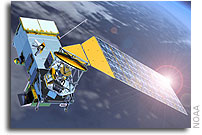NOAA: Next Steps to Strengthen Its Acquisition Function

Why GAO Did This Study
The National Oceanic and Atmospheric Administration (NOAA) accounts for about half of the Department of Commerce’s (Commerce) acquisition spending, over $851 million in fiscal year 2005 alone. In recent years however, NOAA has experienced instances of poor contract management.
GAO was asked to determine if NOAA is positioned to effectively carry out its acquisition function. Specifically, GAO assessed the extent to which NOAA has structured an acquisition organization that provides appropriate oversight; established policies and processes that promote, among other things, a knowledge-based acquisition process for development and production of complex systems; and planned and managed its contracting workforce to address future retirement challenges.
What GAO Recommends
GAO recommends establishment of policies for using a knowledge-based approach for complex developmental acquisitions and other actions to strengthen oversight of NOAA contracting activities and build capacity of NOAA’s contracting workforce to address the agency’s retirement challenges. After reviewing a draft of this report, Commerce concurred with our findings and recommendations.
What GAO Found
NOAA has yet to structure all of its field acquisition activities under the direct oversight of its acquisition organization, increasing the risk that taxpayers are not getting the best value for their dollars. To improve oversight of its acquisition function, NOAA reorganized in 2005 by having all acquisition divisions report to the NOAA Director of Acquisition and Grants. However, NOAA’s acquisition director still lacks direct line authority to oversee a National Weather Service field office that is responsible for one of the agency’s contracts worth up to half a billion dollars. Also, without appropriate oversight from the acquisition organization, collateral duty field staff who are not career contracting officers have bought millions of dollars in goods and services. Our work has shown that a well-functioning acquisition organization has direct lines of oversight between the head of acquisition and various components to help enforce policies that enable efficient and effective contract spending.
Although NOAA has established clear and consistent policies for some key areas, such as advance acquisition planning, the agency lacks a knowledge-based process for developing and producing complex systems—a situation that can increase the risk of cost increases and schedule delays. NOAA is missing key elements that promote successful outcomes for complex developmental systems because it must adhere to Commerce’s acquisition policies that do not support a knowledge-based approach. Without such an approach, the multibillion-dollar satellite investment that NOAA is in the early stages of acquiring is at a higher risk of not meeting program requirements.
NOAA has yet to focus on succession planning and management for its contracting workforce, although the agency is pursuing hiring flexibilities to recruit new contracting employees in anticipation of an impending wave of retirements. NOAA is facing a human capital challenge because of its aging contracting workforce and has reported that about 43 percent of contracting employees are now eligible to retire or will be eligible to retire by 2009. While senior acquisition managers are concerned with the loss of a high percentage of their contracting staff to retirement and other attrition, NOAA has not specifically addressed such contracting workforce challenges in its strategic human capital plan. Also, it is unclear whether human capital planning under way by Commerce will determine the gaps in numbers and skills in the contracting workforce. Unless the future retirement and workforce capacity challenges are strategically addressed, NOAA could soon lose a significant portion of its contracting knowledge base.








